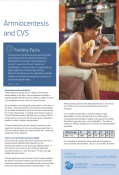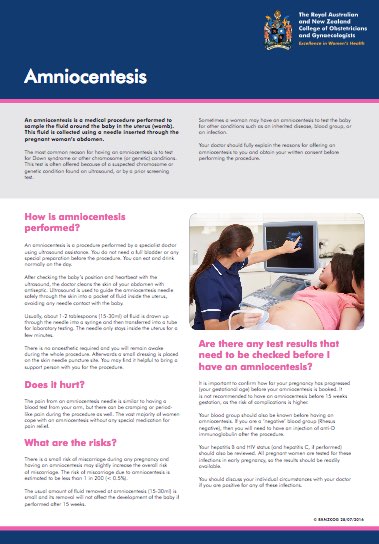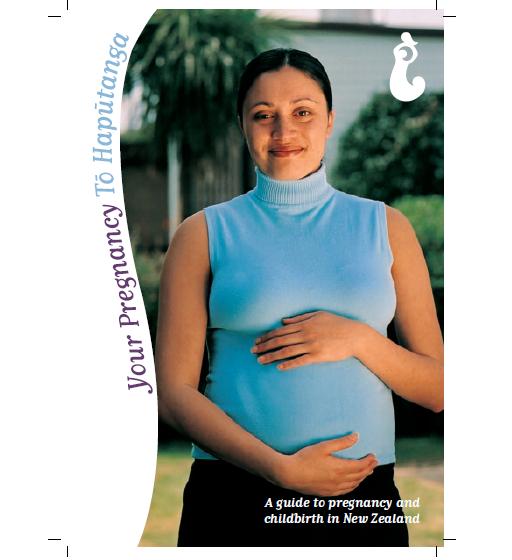When needed, an amniocentesis is usually performed around the 15th week of pregnancy. However, if there isn’t enough fluid at that time, it could be put off for a week or two.
The test can be recommended by your healthcare provider if you:
- have had an abnormal ultrasound, or maternal serum screening test with a result suggesting there is a higher risk of your baby having a genetic condition
- have a family history of certain genetic conditions, eg, cystic fibrosis
- have already had a child/pregnancy with a genetic condition
- are aged 35 years or over when your baby is due.









